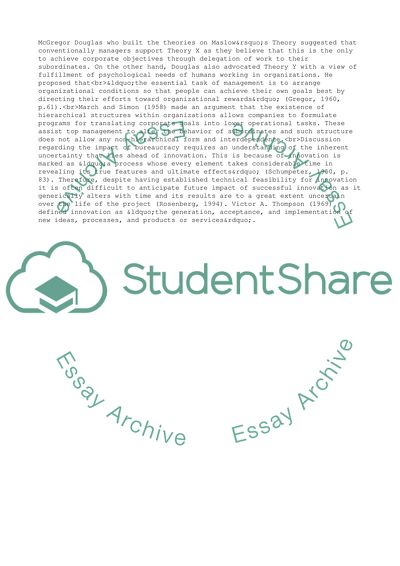Cite this document
(Bureaucracy and Innovation Literature review Example | Topics and Well Written Essays - 3500 words, n.d.)
Bureaucracy and Innovation Literature review Example | Topics and Well Written Essays - 3500 words. Retrieved from https://studentshare.org/management/1732682-effect-of-bureaucracy-on-national-bank-of-bahrain-organizational-innovation
Bureaucracy and Innovation Literature review Example | Topics and Well Written Essays - 3500 words. Retrieved from https://studentshare.org/management/1732682-effect-of-bureaucracy-on-national-bank-of-bahrain-organizational-innovation
(Bureaucracy and Innovation Literature Review Example | Topics and Well Written Essays - 3500 Words)
Bureaucracy and Innovation Literature Review Example | Topics and Well Written Essays - 3500 Words. https://studentshare.org/management/1732682-effect-of-bureaucracy-on-national-bank-of-bahrain-organizational-innovation.
Bureaucracy and Innovation Literature Review Example | Topics and Well Written Essays - 3500 Words. https://studentshare.org/management/1732682-effect-of-bureaucracy-on-national-bank-of-bahrain-organizational-innovation.
“Bureaucracy and Innovation Literature Review Example | Topics and Well Written Essays - 3500 Words”, n.d. https://studentshare.org/management/1732682-effect-of-bureaucracy-on-national-bank-of-bahrain-organizational-innovation.


